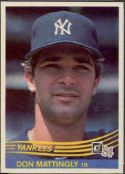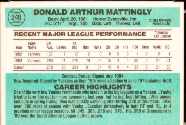1960 Topps #437 Bob Friend (Pirates)


Please wander around the website for more info, prices, values & images
on vintage baseball, football, basketball, hockey, sport and non-sports cards.
Values of Team Autographed/Signed Baseballs
The value of Autographed Team Balls depends on several items
including:
Click for our current
Autographed/Signed Team Baseball inventory
* The Team or Players * Baseballs signed by more popular teams like the Yankees or Mets tend to be more valuable. Also balls with autographs from popular Hall of Famers increase the value. Some team balls like the 1970's Cincinatti Reds or early Yankees balls have numerous Hall-of-Famers. * Condition of Baseball & Signatures * * Number of Autographs * For a ball to be considered a AUTOGRAPHED TEAM BALL it needs to have the autographs of the Manager (often on the sweet spot), all starters and a good number of other players. Obviously, the more autographs the better. * Authentication * Unfortunately in todays world, it's often best to be sure. Companies like PSA/DBA and UDA (Upper Deck Authenticated), JSA (James Spence) & Beckett provide authentication and Certificates of Authenticity (COA) thet can greatly increase a ball's value. Unfortunately, the cost for verification of team balls often is higher than the cost of the balls themselves. * Significance * Autographed team baseballs from pennant winners and championship teams tend to have much higher values. |



1984 Donruss Baseball
After (2) years of releasing very dull, un-inspiring baseball card
sets, Donruss hit a huge HOME RUN with their 1984 issue !!!
The card design was beautiful and the card stock was significantly
improved.
Click for complete
1984 Donruss Baseball Checklist, Values & Info
TOP ROOKIES: Although neither made the Hall, Don Mattingly and Darryl Strawberry had huge impacts thru their careers. Hall-of-Famer Joe Carter was the only rookie from this crop to make the Hall. Diamond Kings continued to attract collectors and the set also featured a multi-player Short Print card of Carl Yastrzemski & Johnny Bench. Note: You may be on that page right now. |

The first baseball trading cards date back to 1869. For many years, baseball cards were packaged in packs of tobacco as a way to increase sales the same way that today prizes are packaged in boxes of cereal. In the 1920's and 1930's, candy and gum companies started packaging baseball cards in their products as well.
Baseball card production was virtually halted in the early 1940's due to paper shortages created by World War II. The "Modern Era" of baseball cards began in 1948 when Bowman Gum Inc. offered one card and one piece of gum in a pack for a penny.
The first important football set was the Mayo set featuring college players in 1984. Other than the 1935 National Chicle set no other key football set was issued until 1948 when noth Bowman and Leaf produced sets.
